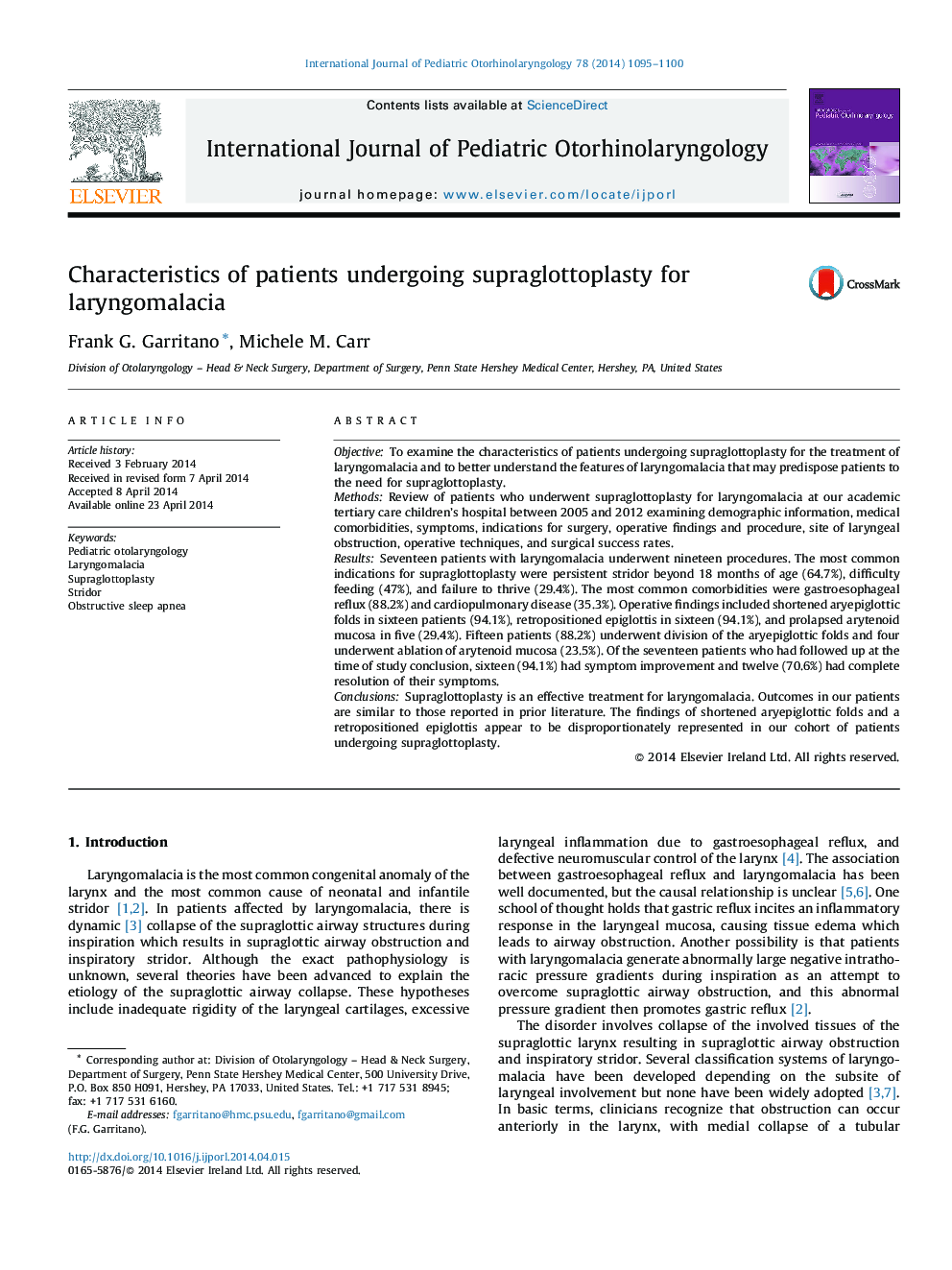| Article ID | Journal | Published Year | Pages | File Type |
|---|---|---|---|---|
| 4112571 | International Journal of Pediatric Otorhinolaryngology | 2014 | 6 Pages |
ObjectiveTo examine the characteristics of patients undergoing supraglottoplasty for the treatment of laryngomalacia and to better understand the features of laryngomalacia that may predispose patients to the need for supraglottoplasty.MethodsReview of patients who underwent supraglottoplasty for laryngomalacia at our academic tertiary care children's hospital between 2005 and 2012 examining demographic information, medical comorbidities, symptoms, indications for surgery, operative findings and procedure, site of laryngeal obstruction, operative techniques, and surgical success rates.ResultsSeventeen patients with laryngomalacia underwent nineteen procedures. The most common indications for supraglottoplasty were persistent stridor beyond 18 months of age (64.7%), difficulty feeding (47%), and failure to thrive (29.4%). The most common comorbidities were gastroesophageal reflux (88.2%) and cardiopulmonary disease (35.3%). Operative findings included shortened aryepiglottic folds in sixteen patients (94.1%), retropositioned epiglottis in sixteen (94.1%), and prolapsed arytenoid mucosa in five (29.4%). Fifteen patients (88.2%) underwent division of the aryepiglottic folds and four underwent ablation of arytenoid mucosa (23.5%). Of the seventeen patients who had followed up at the time of study conclusion, sixteen (94.1%) had symptom improvement and twelve (70.6%) had complete resolution of their symptoms.ConclusionsSupraglottoplasty is an effective treatment for laryngomalacia. Outcomes in our patients are similar to those reported in prior literature. The findings of shortened aryepiglottic folds and a retropositioned epiglottis appear to be disproportionately represented in our cohort of patients undergoing supraglottoplasty.
